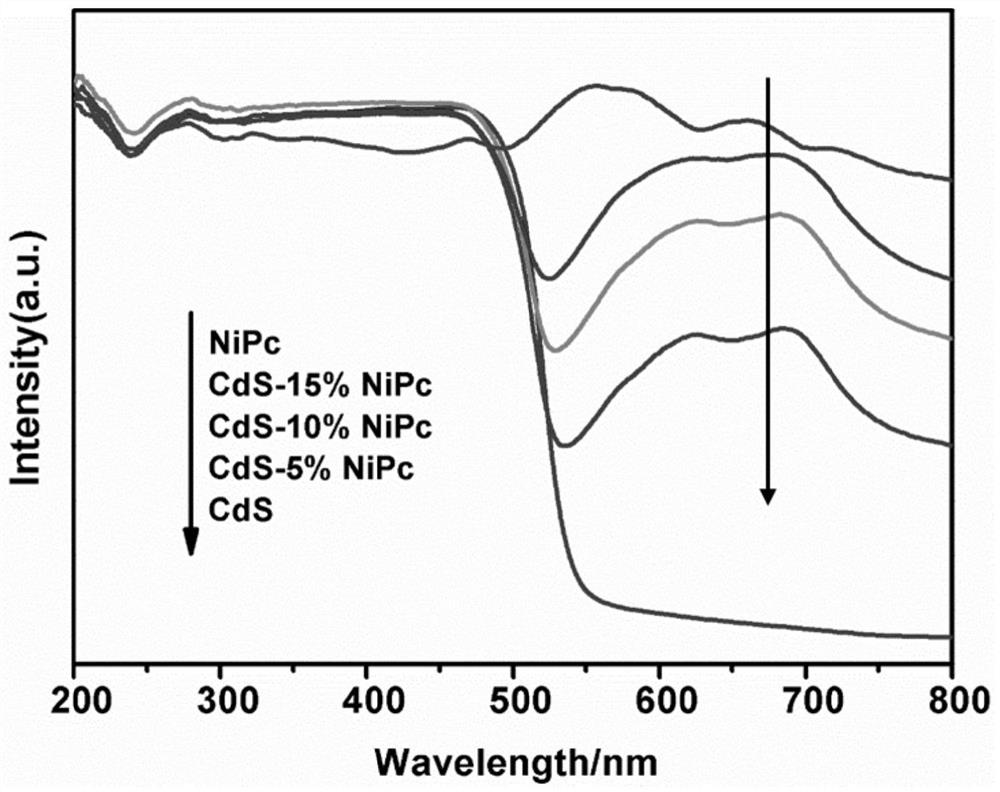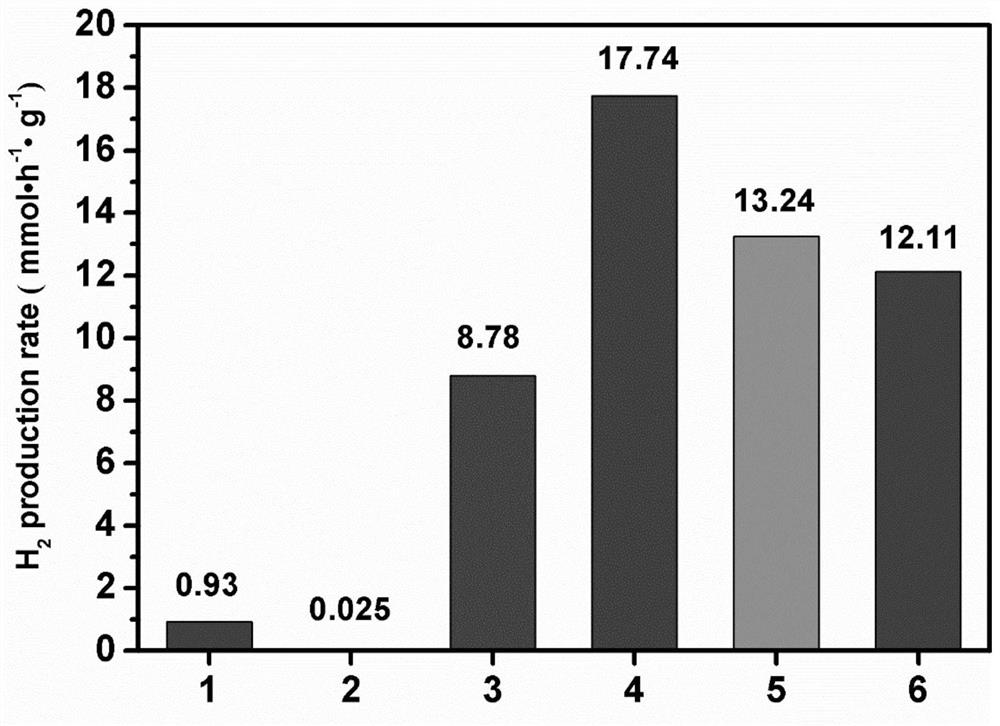CdS/NiPc photocatalyst capable of being used for photolysis of water and preparation method of CdS/NiPc photocatalyst
A technology of photocatalyst and photolysis of water to produce hydrogen, applied in the field of photocatalysis, can solve the problems of weakening the utilization efficiency of visible light, hindering charge separation, and unfavorable full contact of semiconductor photocatalysts, so as to improve the activity and cost of photocatalytic water decomposition for hydrogen production Inexpensive, the effect of improving the catalytic activity of visible light
- Summary
- Abstract
- Description
- Claims
- Application Information
AI Technical Summary
Problems solved by technology
Method used
Image
Examples
Embodiment 1
[0029] A kind of CdS / NiPc photocatalyst that can be used for photolysis water, it comprises the steps:
[0030] Step 1: Weigh 4.8mmol of cadmium chloride and 30mmol of sublimed sulfur into a beaker, then add 30mL of diethylenetriamine (DETA) to the beaker and stir for 30min to form a uniform suspension to obtain a cadmium sulfide precursor ;
[0031] Step 2: Add nickel phthalocyanine (NiPc) accounting for 5% of the theoretical mass of cadmium sulfide to the above-mentioned cadmium sulfide precursor solution, and stir for 30 minutes to form a uniform suspension, then transfer the suspension into 50 mL of polytetrafluoroethylene-containing In a stainless steel autoclave with an inner liner, react at 80°C for 48 hours;
[0032] Step 3: The product obtained after the reaction was washed with deionized water and ethanol and centrifuged, and then the solid was transferred to an oven for drying at 70°C for 12 hours to obtain a CdS / NiPc photocatalyst.
Embodiment 2
[0034] The preparation method in this example is the same as that in Example 1, except that the mass of NiPc added in step 2 of this example is 10% of the theoretical mass of CdS, and the rest of the conditions remain unchanged.
Embodiment 3
[0036] The preparation method in this example is the same as that in Example 1, except that the mass of NiPc added in step 2 of this example is 15% of the theoretical mass of CdS, and the rest of the conditions remain unchanged.
PUM
 Login to View More
Login to View More Abstract
Description
Claims
Application Information
 Login to View More
Login to View More - R&D
- Intellectual Property
- Life Sciences
- Materials
- Tech Scout
- Unparalleled Data Quality
- Higher Quality Content
- 60% Fewer Hallucinations
Browse by: Latest US Patents, China's latest patents, Technical Efficacy Thesaurus, Application Domain, Technology Topic, Popular Technical Reports.
© 2025 PatSnap. All rights reserved.Legal|Privacy policy|Modern Slavery Act Transparency Statement|Sitemap|About US| Contact US: help@patsnap.com



